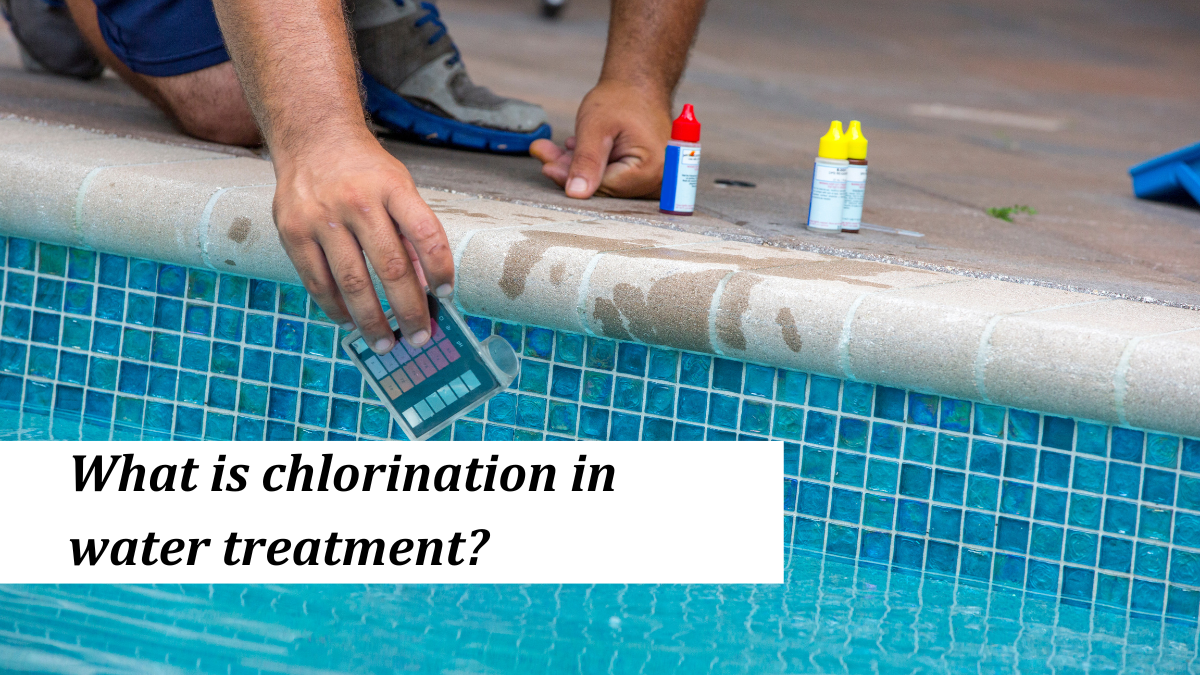Water treatment is an essential process to ensure the availability of safe and clean drinking water for communities around the world. Among the various methods employed in water treatment, It stands out as a highly effective and widely used technique. Its effectiveness in microbial disinfection, taste and odor control, residual protection, and cost-effectiveness make it a preferred method for water treatment plants worldwide. In this article, we will delve into the significance of chlorination in water treatment, its process, benefits, and potential concerns.
What is Chlorination?
Chlorination involves the introduction of chlorine or chlorine-based compounds into water to eliminate or neutralize harmful microorganisms and contaminants. The most commonly used form of chlorine in water treatment is sodium hypochlorite, which releases hypochlorous acid, a potent disinfectant. The chlorination process typically occurs in different stages, including pre-chlorination, primary chlorination, and post-chlorination, to ensure comprehensive disinfection.
Stages of Chlorination in Water Treatment
Pre-Chlorination:
Initiating the water treatment process, pre-chlorination involves introducing chlorine to raw water upon entry into the treatment facility. This strategic measure addresses immediate microbial contamination, kickstarting the disinfection process by targeting and neutralizing harmful microorganisms such as bacteria and viruses.
Primary Chlorination:
In the subsequent stage of primary chlorination, additional chlorine is introduced after the initial treatment process. This step is critical in further disinfecting the water, effectively targeting any lingering pathogens. This stage ensures the microbiological safety of the water, providing a robust defense against potential waterborne diseases.
Post-Chlorination:
Concluding the chlorination process, post-chlorination occurs when the treated water is ready for distribution. Chlorine is added to maintain a residual disinfectant level, acting as a safeguard during the water’s journey through the distribution system. This final stage guarantees ongoing protection, assuring consumers that the water remains safe and meets quality standards until reaching end-users.
Benefits of Chlorination:
Microbial Disinfection:
Chlorination stands out for its exceptional ability to eliminate a broad spectrum of bacteria, viruses, and other microorganisms present in water. This powerful disinfection process plays a pivotal role in preventing waterborne diseases such as cholera, typhoid, and dysentery.
Taste and Odor Control:
Beyond microbial disinfection, It contributes to enhancing the overall quality of water by reducing or eliminating unpleasant tastes and odors. This aspect of the process addresses concerns related to organic and inorganic compounds, ensuring a more palatable and enjoyable drinking experience.
Residual Protection:
One of the noteworthy advantages of chlorination is the residual protection it provides. The chlorine left in the treated water continues to offer ongoing defense against the recontamination of water as it traverses through distribution systems. This residual protection is a crucial element in maintaining water quality until it reaches consumers.
Cost-Effectiveness:
It emerges as a cost-effective water treatment method, making it accessible and feasible for water treatment plants of varying sizes and budgets. This affordability ensures that communities, regardless of their resources, can implement an efficient water treatment strategy, thereby promoting widespread access to clean and safe drinking water.
Applications of Chlorination
Disinfection of Drinking Water:
Chlorination takes center stage in ensuring the safety of drinking water. By introducing chlorine or its compounds, this process effectively eliminates harmful pathogens, guaranteeing the delivery of potable water to communities.
Pathogen Control in Wastewater Treatment:
In wastewater treatment, chlorination is a vital tool for controlling pathogens present in sewage or industrial effluents. It plays a crucial role in safeguarding water bodies from contamination.
Water Distribution System Maintenance:
Chlorine’s role extends to maintaining residual disinfection in water distribution systems. This application prevents the growth of microorganisms, ensuring the integrity of water quality as it travels through pipelines to consumers.
Swimming Pool Disinfection:
For recreational settings, It is a standard method for disinfecting swimming pool water. It effectively eliminates contaminants introduced by swimmers, maintaining a safe and sanitary environment.
Agricultural Water Treatment:
In agriculture, It contributes to the treatment of irrigation water, curbing the spread of waterborne diseases, and ensuring the safety of water used in food production.
Conclusion:
Chlorination’s adaptation and effectiveness make it an essential tool in every aspect of water treatment, playing a critical role in guaranteeing the safety and purity of water in a variety of applications. As companies and communities face new water concerns, This water treatment method remains a reliable technique for ensuring a sustainable and safe water supply.
Ready to improve the quality of your water? Contact us today to discuss customized pretreatment or post-treatment solutions tailored to your specific requirements. For queries, please contact us at 0707075702 or info@refinareastafrica.com.


